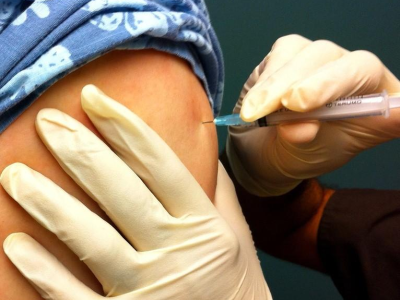Jun 29, 2009
Rapid test shows low sensitivity for novel H1N1
San Diego researchers with close knowledge of the confirmation of the first US novel flu cases reported today in a letter to the New England Journal of Medicine that the sensitivity of rapid tests used during the outbreak was low, the same as for seasonal strains, and varied by subtype. When they compared rapid tests to polymerase chain reaction (PCR) tests, sensitivity for the QuickVue rapid test was 51% for novel H1N1, 63% for seasonal H1N1, and 31% for H3N2.
[Jun 29 N Engl J Med letter]
Airline passengers imported H1N1 from Mexico
Airline industry data show a high correlation between the start of the H1N1 flu pandemic in various countries and the number of passengers from Mexico that tend to arrive in those countries in March and April, according to Toronto researchers. Of the 20 countries that had the highest passenger volume from Mexico in 2007 and 2008, 16 experienced importations of H1N1 from Mexico in 2009; countries that had more than 1,400 such passengers had a "significantly elevated" risk of flu importation.
[Jun 29 N Engl J Med letter]
World pandemic flu tally passes 70,000
The latest global number of new pandemic flu cases is 70,893 cases, including 311 deaths, the World Health Organization (WHO) reported today. The new total is an 11,079-case rise from the WHO's last update on Jun 26. The once-weekly update of US cases represents more than half of the new cases. The number of fatalities rose by 48 since the last report. The list includes four countries reporting their first cases: Iraq, Lithuania, Monaco, and Nepal.
[WHO update 55]
First Tamiflu-resistant novel flu case reported
A Danish patient confirmed as having novel H1N1 influenza exhibited resistance to the antiviral drug oseltamivir (Tamiflu), an official from Roche, the maker of the drug, said today. "While receiving the drug, the patient appeared to develop resistance to it," David Reddy, Roche's pandemic task force leader, said on a conference call, according to Reuters. "This is the first report we have of it in H1N1," he said.
[Jun 29 Reuters report]
Experts: 2-shot novel flu vaccine likely to overwhelm system
The pandemic vaccine now being produced will require two shots 3 weeks apart to provide full immunity, which could overwhelm state agencies, officials said at a meeting last week at the Centers for Disease Control and Prevention. And children younger than 9 years old will need four shots, the CDC said, according to a Bloomberg News report. "Public health departments are underfunded and will get fatigued," said flu expert William Schaffner, adding that one shot will give at most 20% protection.
[Jun 26 Bloomberg News report]
Kenya, Myanmar report first novel flu cases
Kenya's health ministry today announced the country's first novel flu case, a 20-year-old British man visiting as a student, Agence France-Presse (AFP) reported. The man got sick 2 days after arriving in Kenya and is recovering in isolation at a hotel. In other developments, Myanmar's government on Jun 27 reporting the country's first pandemic flu case, a 13-year-old girl who became ill after visiting Singapore with her family, according to Irrawaddy, a Thai-based news service.
Brazil reports first novel H1N1 death
Brazil has reported its first swine flu fatality, in an adult woman of unspecified age, according to a story in today's Hindustan Times. Brazil's health ministry said in a statement that the woman, who died Jun 28, was "from the state of Rio Grande do Sul who had spent 1 week in Argentina." The story said officials were investigating another suspected novel flu death in the same state.
[Jun 29 Hindustan Times story]
Tamiflu reduces flu complications in kids with chronic conditions
Children with chronic medical conditions have fewer flu-related complications when they receive oseltamivir (Tamiflu) within a day of flu diagnosis, researchers reported today in an early online edition of Pediatrics. The retrospective study covered six flu seasons between 2000 and 2006 and was based on a Reuters Thomson database. Compared with those who didn't receive the drug, children who received oseltamivir had fewer complications and hospitalizations 14 and 30 days after flu diagnosis.
[Jun 29 Pediatrics abstract]



















